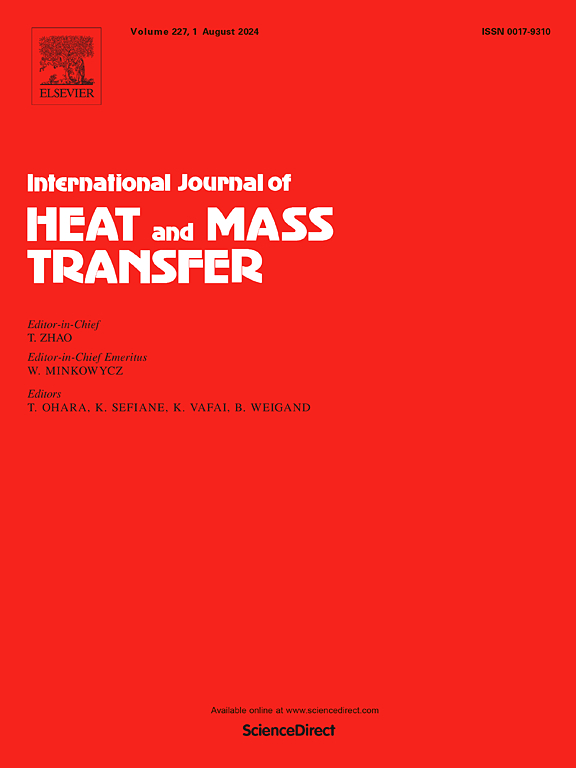Multiphase flow and interface dynamics in a blast furnace hearth: Effects of slag viscosity and coke diameter
IF 5
2区 工程技术
Q1 ENGINEERING, MECHANICAL
International Journal of Heat and Mass Transfer
Pub Date : 2025-04-09
DOI:10.1016/j.ijheatmasstransfer.2025.127085
引用次数: 0
Abstract
This study numerically investigates the effects of slag viscosity () and coke diameter () on the behavior of gas-slag and slag-iron interfaces, as well as the mass flow rates of slag and iron, in a three-dimensional (3D) full-scale blast furnace hearth model with four tapholes undergoing tapping and plugging cycles. This study introduces new perspectives by focusing on the bifurcation behavior of interface evolution, the classification of two distinct regimes in temporal levels, and circumferential variations in interface dynamics along the side wall. The slag-iron interface exhibited linear descent followed by saturation, while the gas-slag interface underwent linear descent followed by acceleration. Bifurcation at the onset of slag drainage, occurring earlier with larger and lower , marked a critical shift in dynamics. Before bifurcation, governed interface descent; after bifurcation, dominated, lowering pressure and increasing the pressure gradient near the taphole. These findings include novel insights into localized dynamics, revealing sharper circumferential gradients under conditions of higher and smaller . Despite variations, slag and iron layer thickness ratios remained stable, reflecting their independence from and . Additionally, a critical intersection point in mass flow rates was identified, where slag flow surpassed iron flow. This point, delayed under conditions of higher and smaller , highlighted the influence of reduced fluidity on two-phase outflow dynamics. These findings highlight the potential of optimizing and to enhance fluidity, production, energy efficiency and sustainability in blast furnace operations.
求助全文
约1分钟内获得全文
求助全文
来源期刊
CiteScore
10.30
自引率
13.50%
发文量
1319
审稿时长
41 days
期刊介绍:
International Journal of Heat and Mass Transfer is the vehicle for the exchange of basic ideas in heat and mass transfer between research workers and engineers throughout the world. It focuses on both analytical and experimental research, with an emphasis on contributions which increase the basic understanding of transfer processes and their application to engineering problems.
Topics include:
-New methods of measuring and/or correlating transport-property data
-Energy engineering
-Environmental applications of heat and/or mass transfer

 求助内容:
求助内容: 应助结果提醒方式:
应助结果提醒方式:


